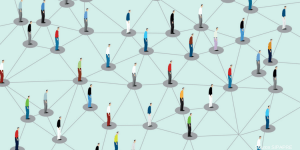3 things mayors can do to help build an army of coronavirus ‘contact tracers’

It’s one of the nuts-and-bolts jobs of public health: tracking down and warning all the people who have been in close contact with a person who has an infectious disease. This “contact tracing” activity has played critical roles in fighting Ebola, HIV/AIDS, measles, tuberculosis, and many other diseases.
At the outset of the Covid-19 outbreak, city, county, and state health authorities quickly became overwhelmed by the number of cases to keep up with this labor-intensive work. But when caseloads drop, building the health departments’ capacities to do contact tracing effectively will become critical to keeping the spread of Covid-19 under control — and essential to any plan to reopen cities safely.
Contact tracing has been a hot topic among mayors in their recent online coaching and learning sessions as part of the Covid-19 Local Response Initiative. It’s also the subject of a recent report from the Johns Hopkins Bloomberg School of Public Health and the Association of State and Territorial Health Officials (ASTHO).
Dr. Tom Frieden, who directed the Centers for Disease Control and Prevention under President Obama, told mayors last week that building capacity around contact tracing is one of the four things we need to do to “box in Covid-19.” (Widespread testing for the virus, isolating the sick, and quarantining those who’ve had contact with the virus are the others.)
[Get the City Hall Coronavirus Daily Update. Subscribe here.]
Frieden also has told mayors that the U.S. may need as many as 300,000 contact tracers to do this work; Johns Hopkins and ASTHO put the number at 100,000. Either scenario would represent an exponential increase over what existed before. While there’s some hope that emerging technologies will speed up the contact-tracing process, there’s no doubt that many new hands will be needed for phone banking and knocking on doors.
As city leaders look to support health departments as they build this army of contract tracers, here are three steps they should consider.
1. Talk to your county and state health departments. In many states, other levels of government are taking the lead on this activity. Massachusetts, for example, has announced plans to deploy 1,000 contact tracers across the state via a collaboration with Partners in Health, a Boston-based nonprofit health care organization that does most of its work in the Global South. County health departments may have similar efforts.
But Dr. Joshua Sharfstein of Johns Hopkins University said mayors have an important role in getting health departments to understand and embrace the scale-up that’s necessary. “Understanding the health department’s plans for this is where I would start,” Sharfstein said. “You can say: ‘Massachusetts just hired 1,000 people — what is your plan?’ Ask them if they’re able to trace every contact right now — and if they are, how many contacts are they able to find?”
Mayors also can offer to help, especially with wraparound resources like food delivery for people who will need to quarantine for 14 days after exposure. “In some parts of the country, the public-health department has been so overwhelmed that they may not have thought these things through,” Sharfstein said, “and they will really value being able to problem solve the situation with you.”
2. Super-charge recruitment. Whether aiding county and state efforts or running their own in the bigger cities with health departments, mayors can elevate the urgency of recruiting people to do this work and make it a top priority. They and their staffs are well positioned to mobilize volunteer networks, redeploy city employees such as librarians, school nurses, and Census outreach staff, or partner with universities and community groups to find people who — with training — can serve as contact tracers. In San Francisco, for example, Mayor London Breed has partnered with the University of California, San Francisco to lead the effort in coordination with the city’s Department of Public Health.
How many people will be needed is going to depend on the community. “The number of contact tracers you need will depend on how many cases you have,” Frieden said. “You contact-trace every case. The more cases you have, the more contact tracers you need.” Recruits will need a few traits to succeed, Frieden said. They need to “have great people skills, understand confidentiality, come from within the community, and be able to gain the trust of individuals.”
3. Use your bully pulpit to educate the public. Success at scale will not just require an army of contact tracers but also a cooperative public. Mayors have a role in communicating to residents that their assistance in making contract tracing successful is part of what’s needed to help life in their cities return to normal. For residents, the messages are clear: Answer the phone or open the door when a contact tracer reaches out. And follow their instructions when it comes to quarantine.
“You have a role here,” Frieden told the mayors. It’s about communicating that ‘All of us who are ill have a responsibility to help those who may have been exposed to get warned. And all of those who’ve been exposed have a duty to quarantine themselves so that the virus, if they get it, stops with them.”
Read more: “A National Plan to Enable Comprehensive Covid-19 Case Finding and Contact Tracing in the US,” by The Johns Hopkins Bloomberg School of Public Health and the Association of State and Territorial Health Officials.


